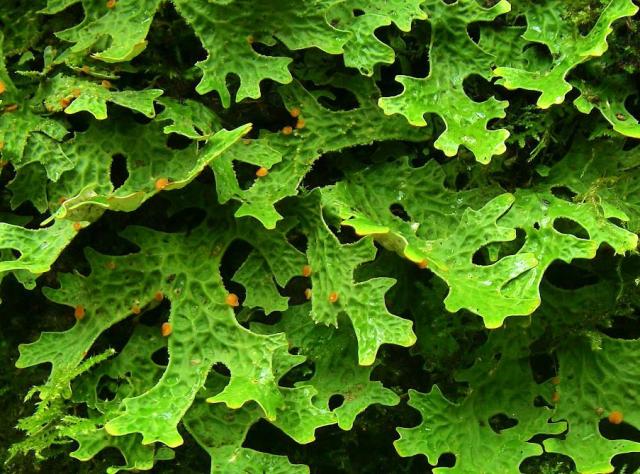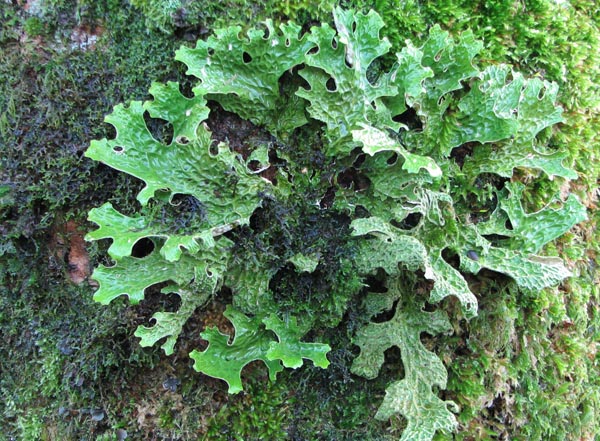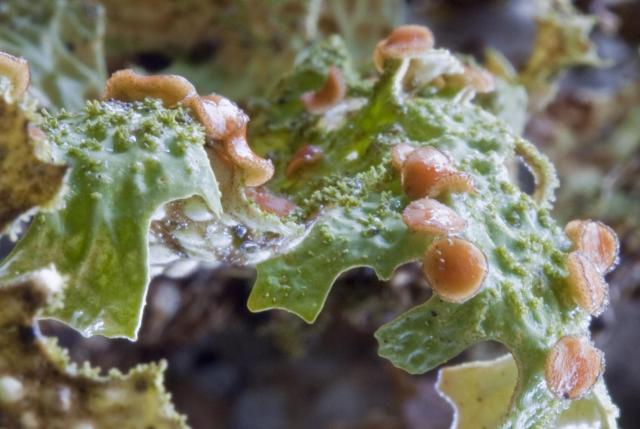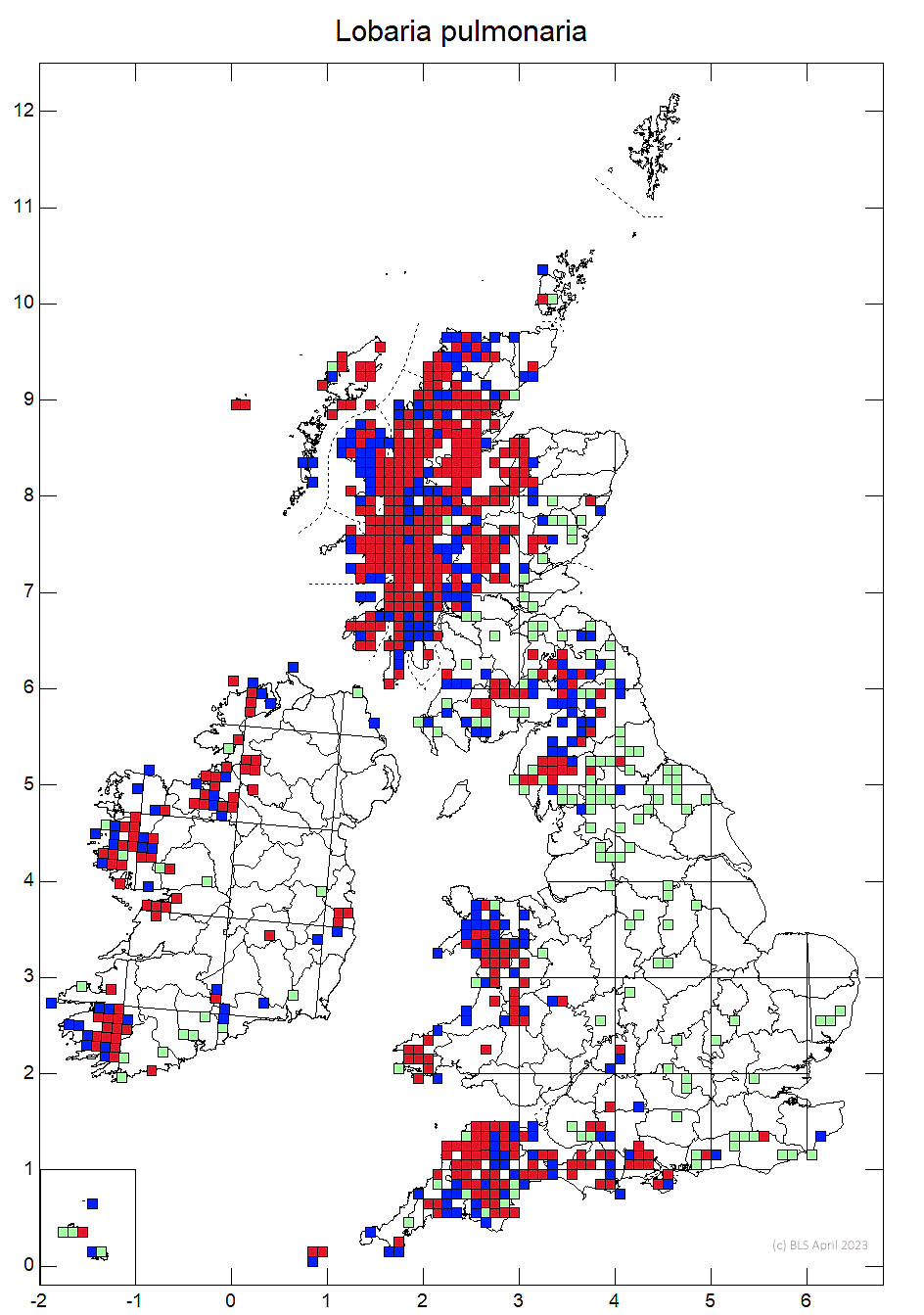Lobaria pulmonaria
A conspicuous large, green, foliose lichen found on tree trunks and stone.
The thallus is wide-spreading, often >30cm diameter with 1-3cm wide lobes, and is loosely attached at one end, at times hanging and strap-shaped. The upper surface is pale green-brown when dry, bright green when wet, strongly reticulately ridged with marked deptressions and often with isidia, or more rarely coarse soredia, along the ridges. The lower surface is finely tomentose, brown and bullate.
Frequently fertile in western Britain, sterile in eastern areas.
Reactions: medulla Pd+ orange, K+ yellow-orange, KC+ yellow-orange, C-. Contains norstictic, stictic and constictic acids.
Occurs on broad-leaved trees, low scrub, heather and mossy rocks, rarely on old walls in the west and on conifers in western Scotland. Away from western Scotland it is a good indicator of ancient woodland, and in lowland areas of southern England is found in former medieval parklands and old forests such as the New Forest.
Lobaria pulmonaria is the most typical and constant memebr of the foliose Lobarion communities, with species of Lobaria, Sticta, Nephroma, Degelia, Pannaria, Parmeliella, and the crustose "old forest" species that grow on bryophytes such as Homalothecium sericeum and Isothecium myosuroides.
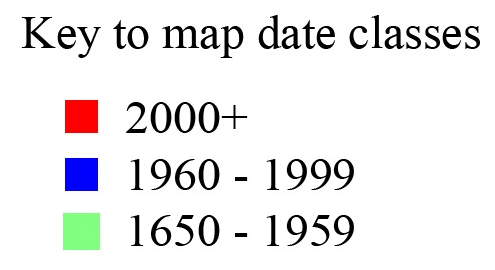
Common in western and central Scotland in suitable habitats, even on planted and roadside trees. Much less common elsewhere but locally frequent to locally abundant in southern Scotland, northwest England, north and south Wales, occasional in Dorset and the New Forest, and very rare in Sussex, Kent, NE England and the West Midlands.
Scarce in Ireland except in the southwest.
Widespread in oceanic and montane Europe but now extinct in the lowland plains of central Europe and most of lowland France except near the Atlantic coast. Still present in the lowlands of western Denmark and Schleswig. In montane areas of Europe it occurs on Abies as well as on broad-leaved trees.
Also in Macaronesia, north and south Africa, North America, and Asia.
Native. Locally abundant but rare and decreasing in parts of the south and east and now extinct from former sites in the midlands, East Anglia, and east of Hereford and Gloucester.
It is very sensitive to changing habitat structure and woodland management, also to atmospheric pollution, especially SO2 and acid rain.
Rose, F. & Coppins, B.J. (1998) species account in Lichen Atlas of the British Isles. British Lichen Society, London.
